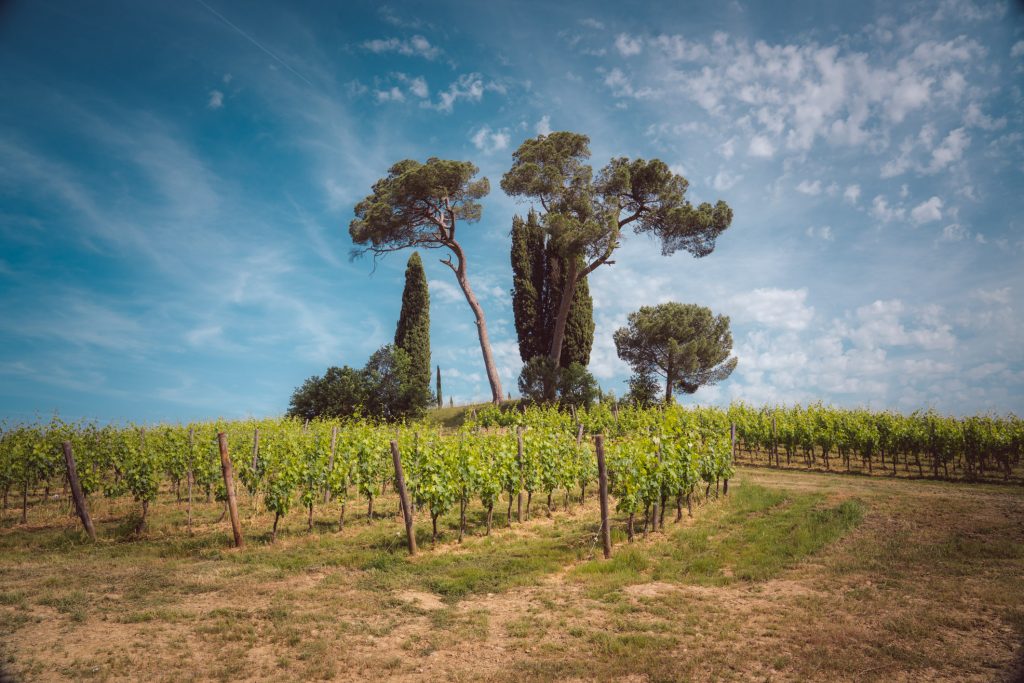Tuscan Territories
While most wine drinkers equate Tuscany to the catch-all Chianti denomination, this sprawling region is home to an array of smaller sub-regions and zones, focussed in on differences in climate, geology and topography.
Chianti
The Chianti denomination covers a large part of central Tuscany, touching the provinces of Siena, Florence, Arezzo, Pisa, Pistoia and Prato and was established as a DOCG as recently as 1984. The Chianti Classico region sits within this larger zone, sandwiched between the cities of Florence in the north and Siena in the south and was delineated in 1996. Vineyard areas are situated on higher ground, up to 800m above sea level.
Despite its particularly jagged borders, the Chianti area is characterised by a strong geological homogeneity. Clay schist soils (locally known as galestro) alternate with carbonate sedimentary rock (albarese) and fine limestone sandstones. The name “Chianti” comes possibly from the name of an Etruscan family, the Clante, although some historical sources suggest that it comes from the Latin clango, meaning a noise of weapons and trumpets, as hunters roamed the Tuscan hills.

Brunello di Montalcino
The zone of Montalcino is located in south-eastern Tuscany, 40 km south of the city of Siena, and was established as a DOCG in 1980. The production zone covers a total area of 243.62 km2, bordered by the valleys of three rivers: the Orcia, Asso and Ombrone.
The Sangiovese clone grown in Montalcino is known as Sangiovese Grosso, or Brunello, and has thicker skins than the Sangiovese Piccolo grown in Chianti, resulting in darker wines which are well-suited to ageing.
The Montalcino hill was formed in different geological eras and shows traces of sand and clay. The climate is Mediterranean, basically dry but with continental influences due to its position between the sea and the mountains of the Central Apennines. Rainfall is concentrated mainly in the spring and autumn months, with an annual average of about 700 mm.
Maremma
The Maremma extends for about a quarter of the territory of Tuscany, between the provinces of Livorno and Grosseto on the border with Lazio to the south. It is a unique location thanks to the diversity of its geology and terroir, with sea, hills and mountains blending together. It was known as an area for wine production as far back as in Etruscan times.
The soil is clay and marl based and also has a strong sandy and gravel component. The climate of the Maremma has Mediterranean characteristics along the coast and a more consistent year round temperature, while it takes on more continental characteristics as you head inland. Classified as a DOC region in 2011, the range of climatic conditions allows for a wide range of grape varieties, including white wines from grapes such as Vermentino.

Toscana and Costa Toscana
IGT Toscana was classified in 1995 in response to the rise of ‘Super Tuscans’ – wines made by producers who refused to conform to the stringent rules of Chianti production. This classification allows a wide range of varietals and can be made from vineyards across Tuscany.
The Costa Toscana appellation evolved from the original Toscana IGT in 2010 and denotes the coastal regions across the provinces of Massa-Carrara, Lucca, Pisa, Livorno and Grosseto. This zone has a specifically Mediterranean climate, with less diurnal temperature variation and interestingly less reliance on Sangiovese compared to the rest of Tuscany, in favour of French or other international varietals.





